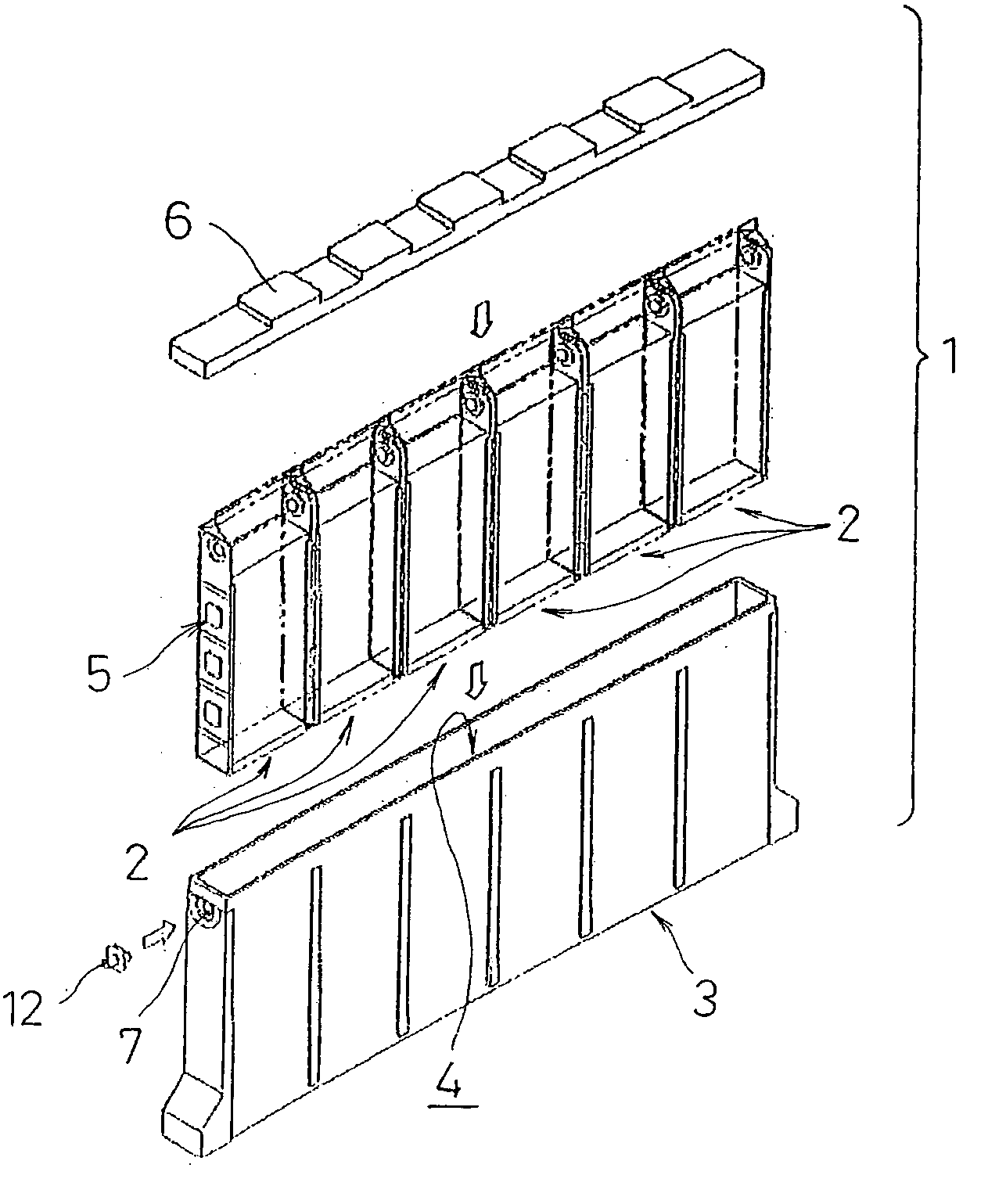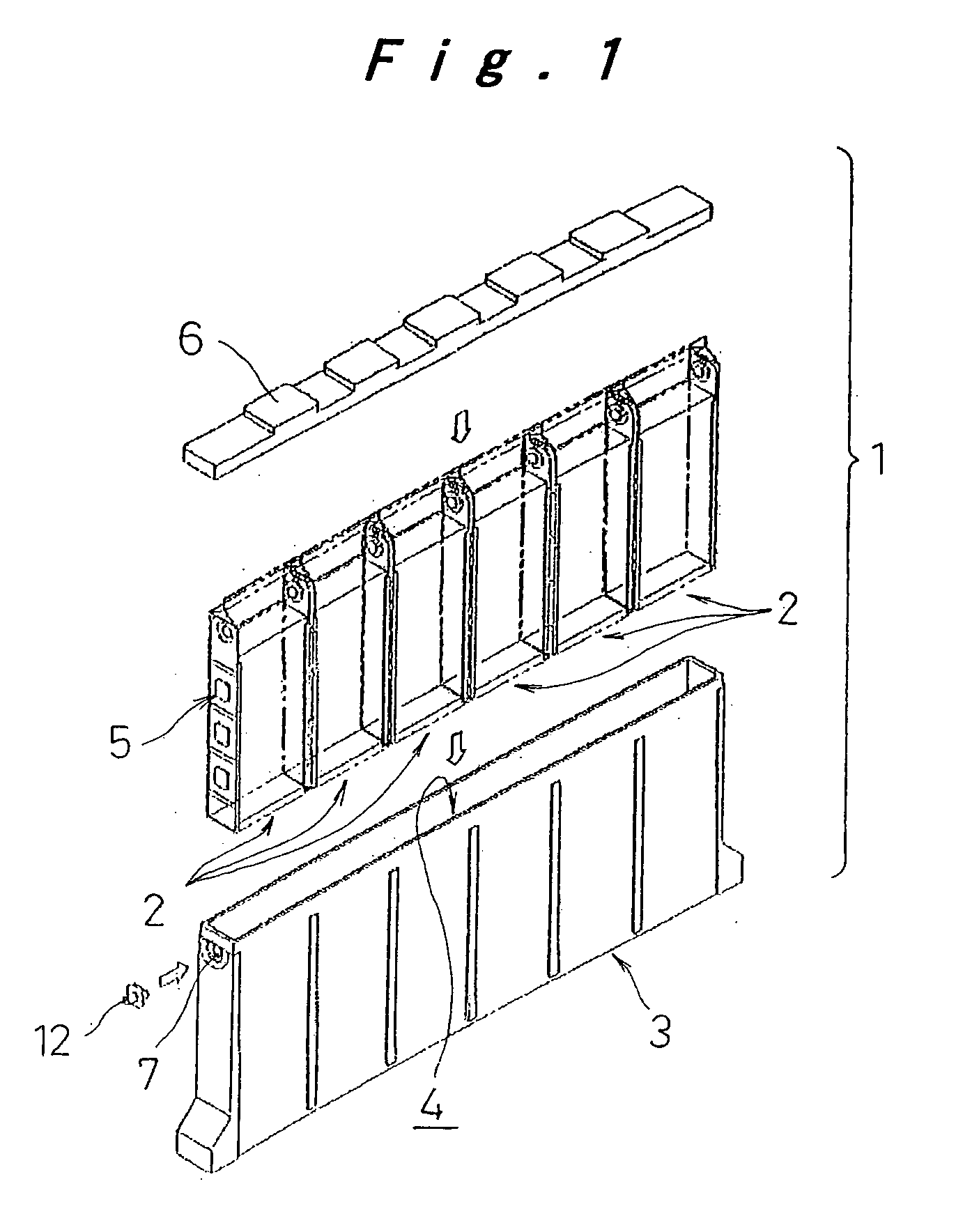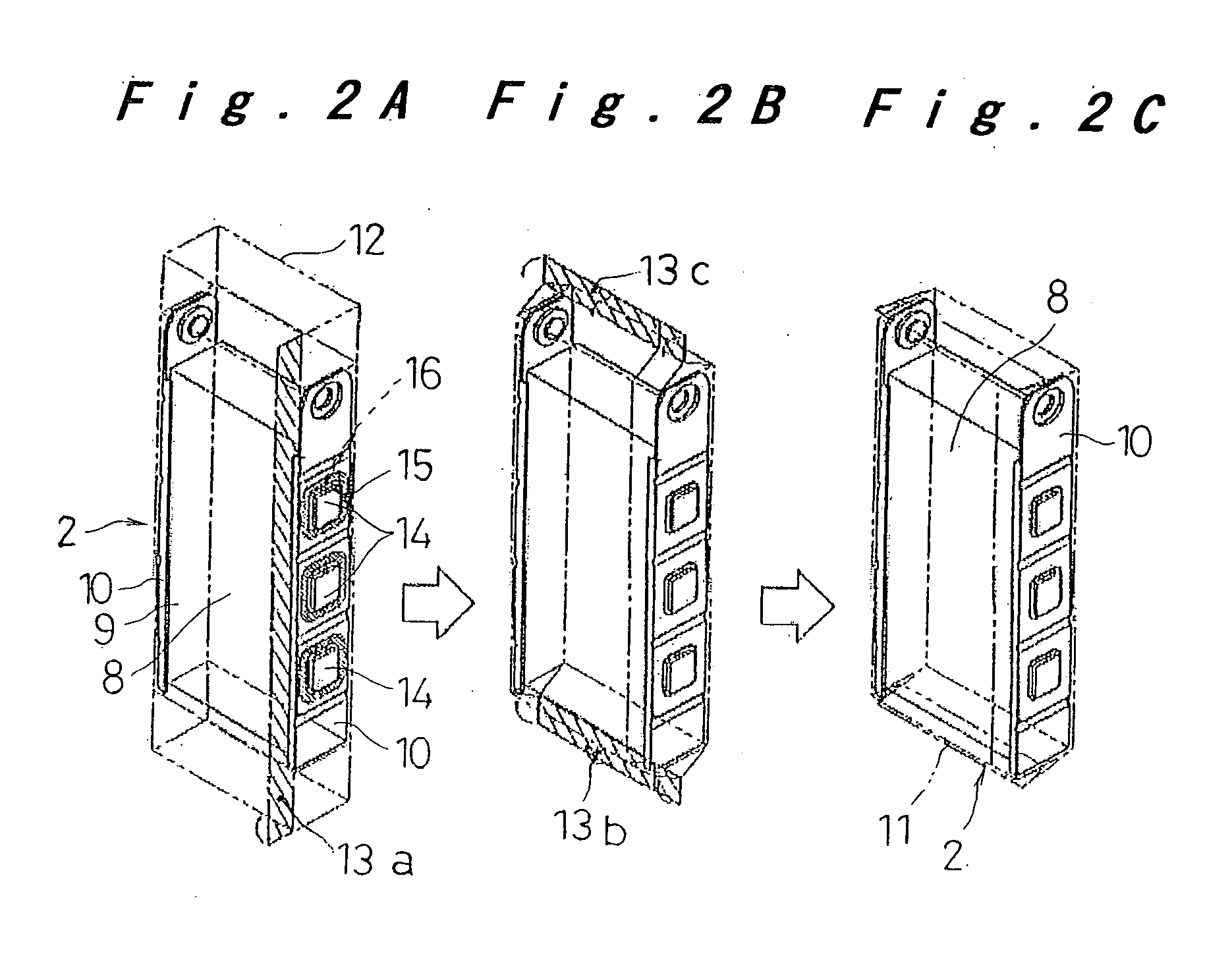Cell, connected-cell body, and battery module using the same
a connected cell and battery module technology, applied in the manufacture of cell components, cell component details, final product manufacturing, etc., can solve the problems of increasing the output and enhancing life characteristics, increasing the cost, and affecting the production efficiency of cells, so as to reduce the internal resistance per cell, increase the output, and increase the output
- Summary
- Abstract
- Description
- Claims
- Application Information
AI Technical Summary
Benefits of technology
Problems solved by technology
Method used
Image
Examples
first embodiment
[0042] a battery module of the present invention will be described referring to FIG. 1 to FIG. 12B.
[0043] In FIG. 1, a battery module 1 of the present embodiment includes a prismatic battery case 3. The prismatic battery case 3 has a horizontally oblong box shape, and forms a storage space 4 for storing a connected-cell body 5 including a plurality of (six in the drawing) cells 2. The connected-cell body 5 is formed by connecting the plurality of prismatic cells 2, including short side surfaces and long side surfaces, with each other at their short side surfaces. Connection holes 7 for installing and connecting a connection terminal 12 are formed on an upper part on both end walls of the prismatic battery case 3. In addition, a top opening of the prismatic battery case 3 is sealed by adhering a cover 6.
[0044] An electrode plate group 8 is constituted such that a plurality of positive electrode plates and negative electrode plates are alternately laminated with separators interposed...
second embodiment
[0069] The following section will describe a cell and a connected-cell body of the present invention which are preferably used for the battery module 1 described above while referring to FIG. 13 to FIG. 15.
[0070] In FIG. 13 to FIG. 15, a connected-cell body 40 is constituted by connecting a plurality of (only two in the drawing) cells 41. The cell 41 is constituted by storing an electrode plate group 43 including collectors 44 joined on both ends along with electrolyte in a bag-shape battery case 42.
[0071] The bag-shape battery case 42 is constituted by joining a single-layer or multi-layer-laminated synthetic resin sheet 45 made of polypropylene or polyethylene into a bag shape by heat adhesion or adhesion with adhesive. Specifically, the synthetic resin sheet 45 with a thickness of 100 to 150 mm is wound on the electrode plate group 43 so as to surround it. Then, both side edges are joined by heat seal, and the bottom end of the tubular synthetic resin sheet 45 formed in this way...
PUM
| Property | Measurement | Unit |
|---|---|---|
| thickness | aaaaa | aaaaa |
| polarities | aaaaa | aaaaa |
| heat | aaaaa | aaaaa |
Abstract
Description
Claims
Application Information
 Login to View More
Login to View More - R&D
- Intellectual Property
- Life Sciences
- Materials
- Tech Scout
- Unparalleled Data Quality
- Higher Quality Content
- 60% Fewer Hallucinations
Browse by: Latest US Patents, China's latest patents, Technical Efficacy Thesaurus, Application Domain, Technology Topic, Popular Technical Reports.
© 2025 PatSnap. All rights reserved.Legal|Privacy policy|Modern Slavery Act Transparency Statement|Sitemap|About US| Contact US: help@patsnap.com



